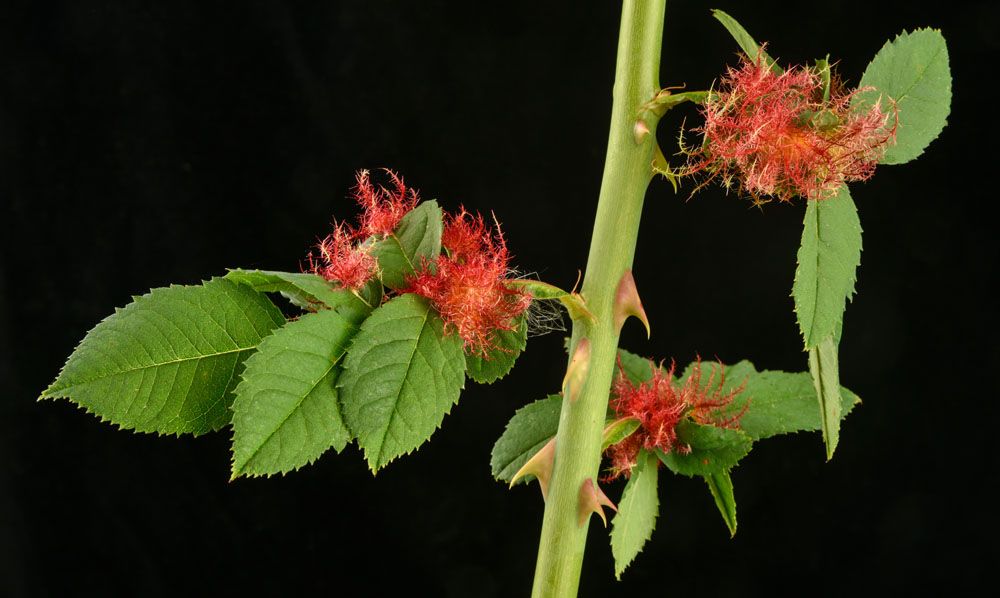
Mossyrose Gall Wasp – Dioplolepsis rosae
Mossyrose Gall Wasp (Dioplolepsis rosae)
Latin Name: Mossyrose Gall Wasp
Common Name: Dioplolepsis rosae
Appearance:
- The rose bedeguar gall, also known as Robin’s pincushion, mossy rose gall, or simply moss gall is caused by Diplolepis rosae, a gall wasp.
- A spherical, red, fibrous growth on the stems of Dog-roses is the mossy rose gall wasp (Robin’s pincushion). The galls are more common than the mature gall wasps or the grubs.
- The female insects are around 4 mm long and have amber/chestnut-colored sections of their abdomens and legs, while their remaining bodies are black.
- The male (about 3 mm in length) is exceptionally uncommon. Its legs are bi-colored, and it is black. The gall is more likely than the adult wasp to be spotted.
- Tiny wasps known as mossy rose gall wasps cause galls to grow on the leaves of mossy roses.
Territory:
Europe and North America
Damages caused by Leaf chewers:
Insect chewing damage to plants can take numerous forms. Foliage or flowers may vanish when certain insects eat them. Occasionally, the plant will appear ragged and, upon closer inspection, will reveal bitten edges or cores. Plants can be cut at the root and topple over, or twigs can be girdled and die as a result. Mining or boring is the process of causing harm to a plant through chewing. Only the upper or lower surfaces are sometimes destroyed, producing a brown, burned look or skeletonization (openings between the veins).
Life History and Habits:
The Robin’s pincushion (sometimes called the ‘Bedeguar Gall’) is a gall caused by the larvae of the Dipoloepis rosae gall wasp. The adult wasp lays eggs in buds or growing leaves during the mid-summer. Tiny white larvae emerge from the eggs, promoting aberrant development. Each gall contains many grubs, which feed on the gall tissues during the winter and emerge as adults in the spring. Adults reproduce asexually, and only a small percentage of them are male.
